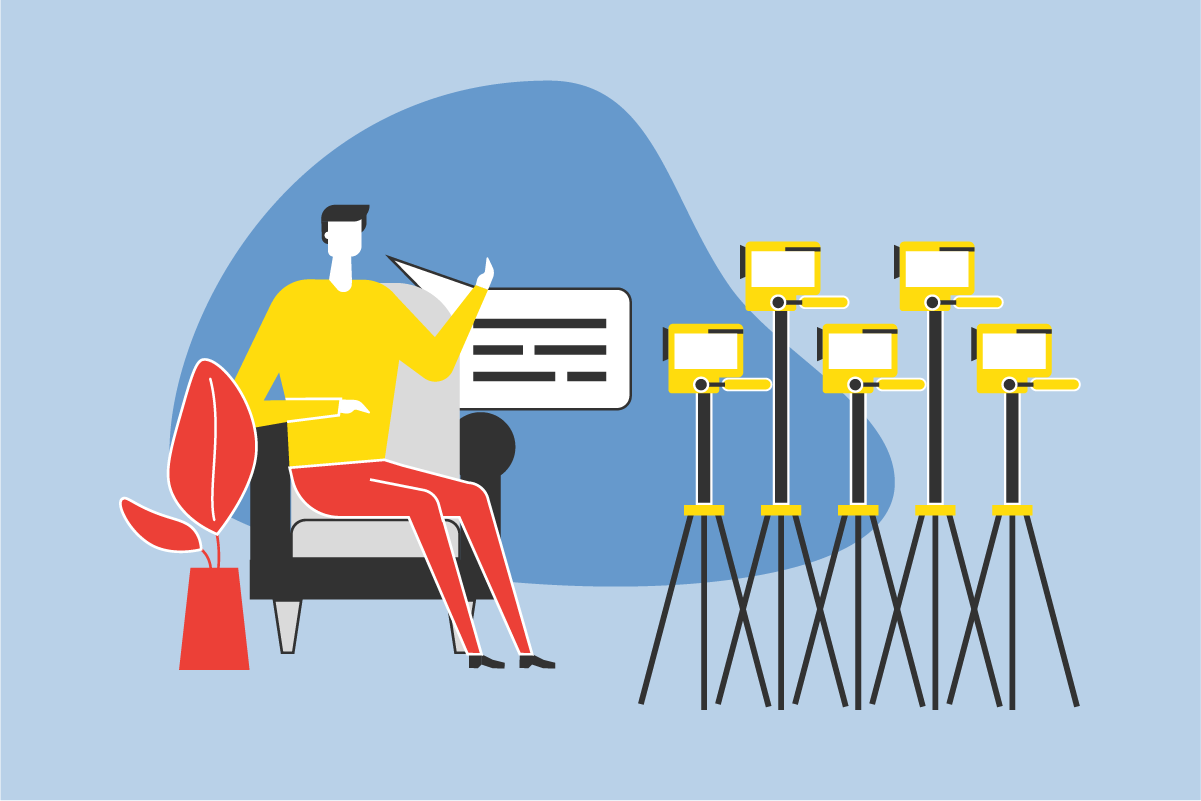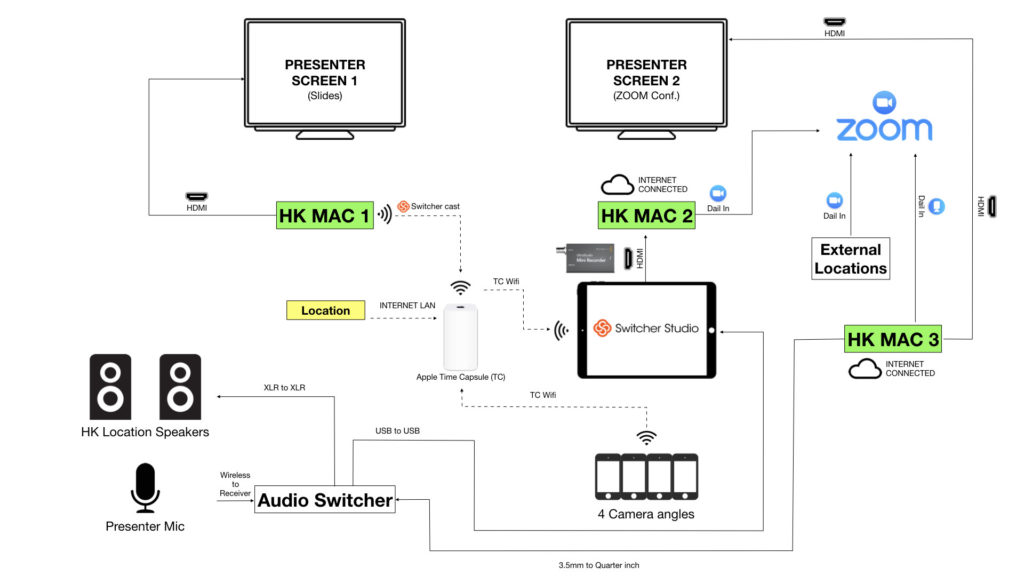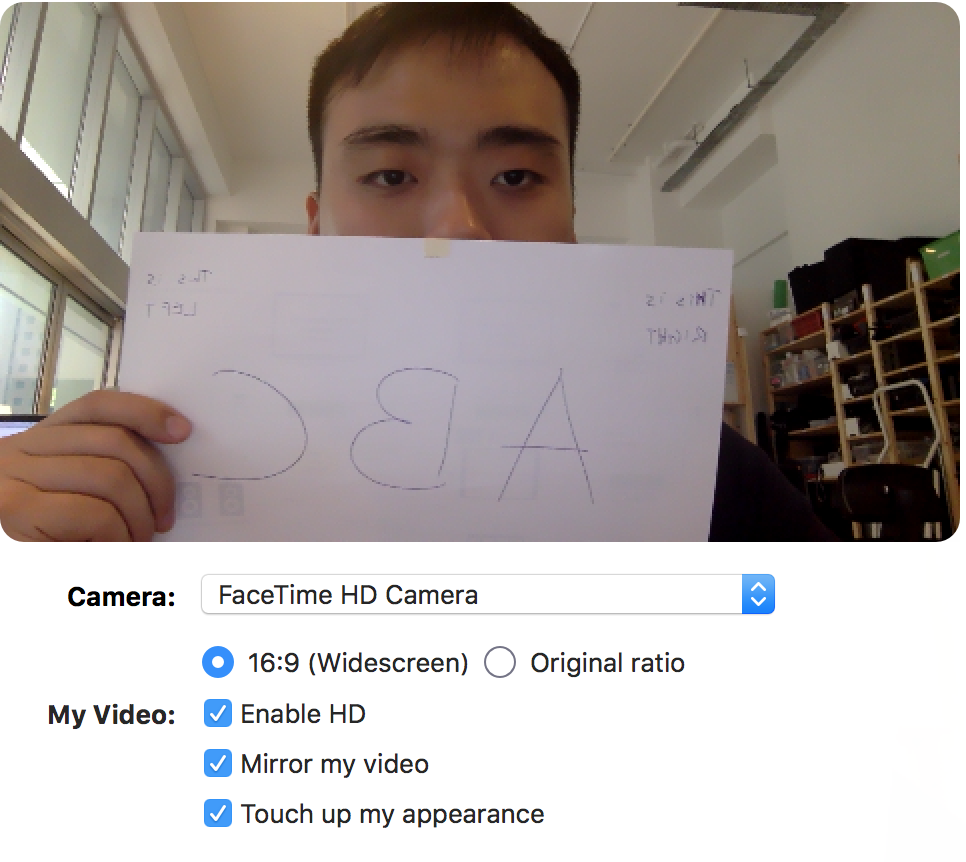

Streaming multi-camera Switcher Studio into a Zoom meeting
Think you can stream multiple cameras into meeting software live? We did too. Until we were faced with several audio and video complications...

A client asked us if it would be possible to stream an event in Hong Kong to their other regional locations. Initially we thought they’d meant YouTube Live or Facebook Live — no problem. We could easily set that up with Switcher Studio and a multi-camera smartphone set-up. But after several discussions, we learned that the client wanted their offsite locations to connect into the stream remotely using a secure platform like Zoom or BlueJeans.
Mission Impossible?
This wasn’t the first time we’d come across this sort of request. Recently we’d tried to do the same with another client who uses the BlueJeans platform. The client works in a regulated environment so the option of doing something on public platforms or the Switcher Studio remote dial in wasn’t a goer. In that previous case, it simply wasn’t possible. We worked with a smart group from their IT and conferencing equipment provider and eventually decided it was too hard to do effectively in the time allowed.
Problem solved … nearly
Zoom was a little easier but not without challenges. In the end here’s how we did it:
The main location was in Hong Kong, where we had a multi-camera live shoot of a client event. Remote locations included Singapore, Indonesia, Vietnam and the Thailand. We had to simultaneously share slides and video which were playing out on big screens in Hong Kong and being shared on the stream to the other locations.

I’ll focus on the video stream first. (Audio is a whole other conversation.)
Starting with Switcher Studio, and using an iPad Pro to enable an HDMI out signal via USB C, we had four camera angles. The Switcher set up operated via its own wifi network (we used an Apple Time Capsule) which was connected to the client’s local area network (LAN) by network cable. Slides were coming in from one PC connected to Switcher using Switcher cast and also connected to the big screen in Hong Kong via HDMI. The video then outputs via the USB C port into a dongle that converts the output to HDMI which we then connected to a Black Magic Design Ultra Studio Mini Recorder that took the HDMI in and output it through a Thunderbolt mini display port.
We connected the mini display port to a Mac that was dialled into the Zoom call. The Mac took the Thunderbolt feed as an external camera, allowing us to send a multi-camera feed into the Zoom call. At the same time we had a third Mac that was on the Zoom call, and it was pushing the Zoom feed, including the external locations to a second big screen in Hong Kong.
That’s part 1. Part 2 — which is audio — was equally complicated.
We ended up having an audio deck at the client location, taking their usual signal from mics running through their speaker system. We took an output, ran it through a Rodecaster and output an audio signal directly into the Mac we were using to show the Zoom call on the big screen in Hong Kong. We had planned, as the diagram shows, to run it all through our Rodecaster from our own mics, but as you find on the day, not everything goes to plan. Miraculously, the audio synced with the video perfectly.
The bits that didn’t work so well
Now to the troublesome parts. It’s hard to deliberately switch the zoom from location to location so we had some issues putting the remote locations up on the big screen in Hong Kong, but that was fairly minor once the call host took charge of that aspect. The harder part was allowing everyone to hear. We had to mute the external locations while the Hong Kong speakers were talking and then do the opposite to allow each external location in turn have their audio be heard in Hong Kong. (If anyone reading has some suggestions on overcoming this, please comment.) We got there but it was hardly seamless.
At the end of the day, we succeeded in allowing the regional locations be there for the Hong Kong event and the company leadership could share the collective moment with several far-flung offices.
Fun Fact:
Platforms like Zoom/Bluejeans/Skype mirror our camera so the Facetime/web camera doesn’t look flipped. But because of this, any text that appears behind the subject will have an ambulance text effect.



Please let us know in the comments if you’ve had a similar experience? Or have any suggestions for us.
Read more from Click2View:
- Bear in mind these tips when you’re doing a Google Hangout webinar
- Where do you start with content marketing?
- Harness the power of B2B content
Sign up to our newsletter for more.
Click2View is Southeast Asia’s premiere full-service independent B2B content marketing agency servicing clients like Microsoft, Google, Visa, Prudential, and the Lee Kuan Yew School of Public Policy.








